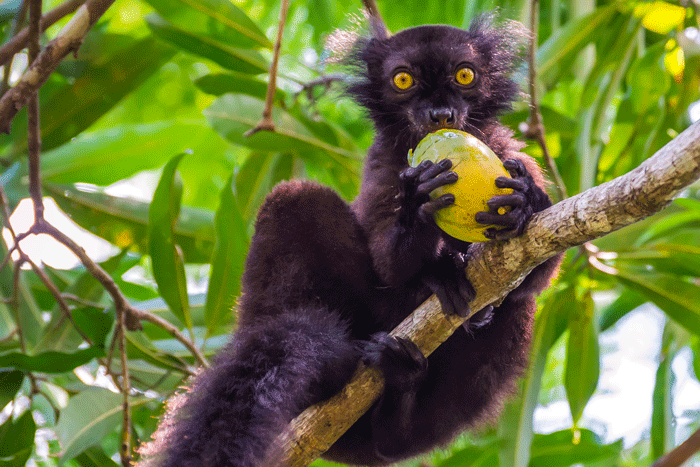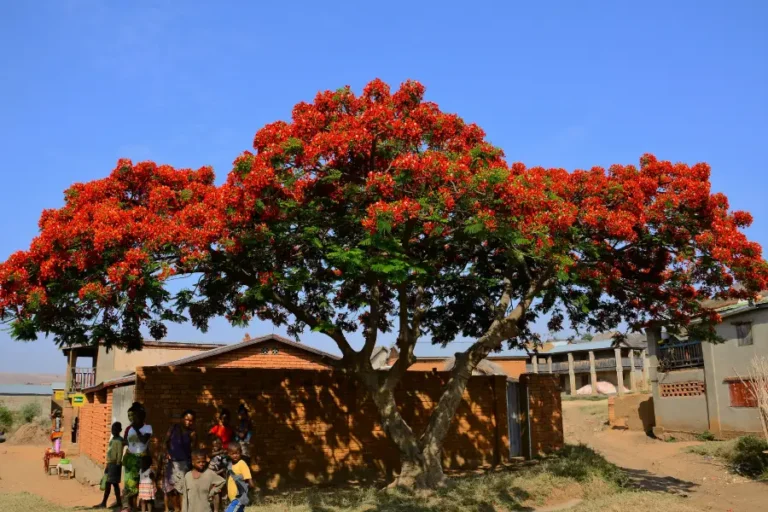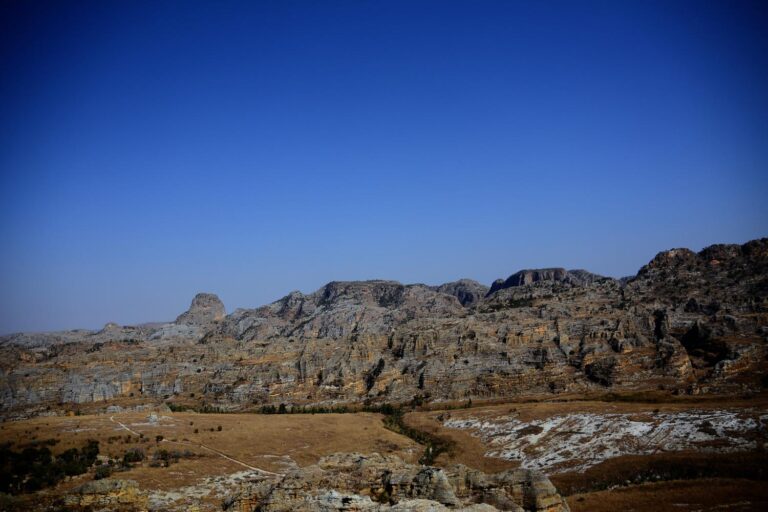Lokobe National Park is located on the southeastern peninsula of Nosy Be Island, in the Diana region of northwestern Madagascar. It spans a total area of 862 hectares and protects one of the last low-altitude evergreen dense forests in the Sambirano region. First classified as a strict nature reserve in 1927, Lokobe became a national park open to the public in 2011.
This tropical forest is home to some of the island’s most precious biodiversity. It can be accessed either by road from Hell-Ville (to the west) or by sea (to the east), via traditional dugout canoe or motorboat.
Lokobe is a natural sanctuary where primary forest, mangroves, coral reefs, and seagrass beds coexist. Its terrain, shaped by volcanic hills reaching up to 432 meters, drops steeply into the sea. Numerous small streams run through the park, supplying nearby villages with water.
The climate is tropical, alternating between a hot and humid season from October to April (with heavy rains in December and January) and a dry season from June to August. The average annual temperature is around 26°C.
In terms of wildlife, Lokobe is renowned for its endemic lemurs, such as the black lemur (Macaco), mouse lemurs, nocturnal lemurs, and the sportive lemur. The park is also home to rare chameleons, geckos, boas, diamond frogs, and iconic birds like the Madagascar owl.
The flora is equally remarkable, with century-old trees, medicinal plants, and endangered palm species such as Dypsis ampasindavae. The park is co-managed by Madagascar National Parks and local communities, with strong conservation efforts to counter threats like poaching and deforestation.
Lokobe plays an essential role in the lives of more than 3,700 residents, providing drinking water, irrigation, and ecotourism opportunities. Guided tours are offered on foot or by canoe, featuring exploration of the primary forest, wildlife observation, and accommodation in the village of Ampasipohy. The park also retains a sacred dimension linked to local royal history, and its name means “full of wax.”
Information Table – Lokobe National Park
| Element | Details |
| Location | Southeast of Nosy Be, Diana region, northwest Madagascar |
| Area | 862 hectares |
| Access | By road (from Hell-Ville) or by sea (canoe or motorboat) |
| Climate | Tropical (wet season: Oct–Apr; dry season: Jun–Aug) |
| Maximum altitude | 432 m (volcanic hills) |
| Iconic wildlife | Black lemur, panther chameleon, Madagascar owl |
| Remarkable flora | Primary forest, endemic palms (Dypsis ampasindavae) |
| Tourist activities | Hiking, canoeing, wildlife and plant observation, ecotourism |
| Management | Madagascar National Parks + local communities |
| National park status | Since 2011 |
| Cultural uniqueness | Sacred forest with ancient royal traditions |






